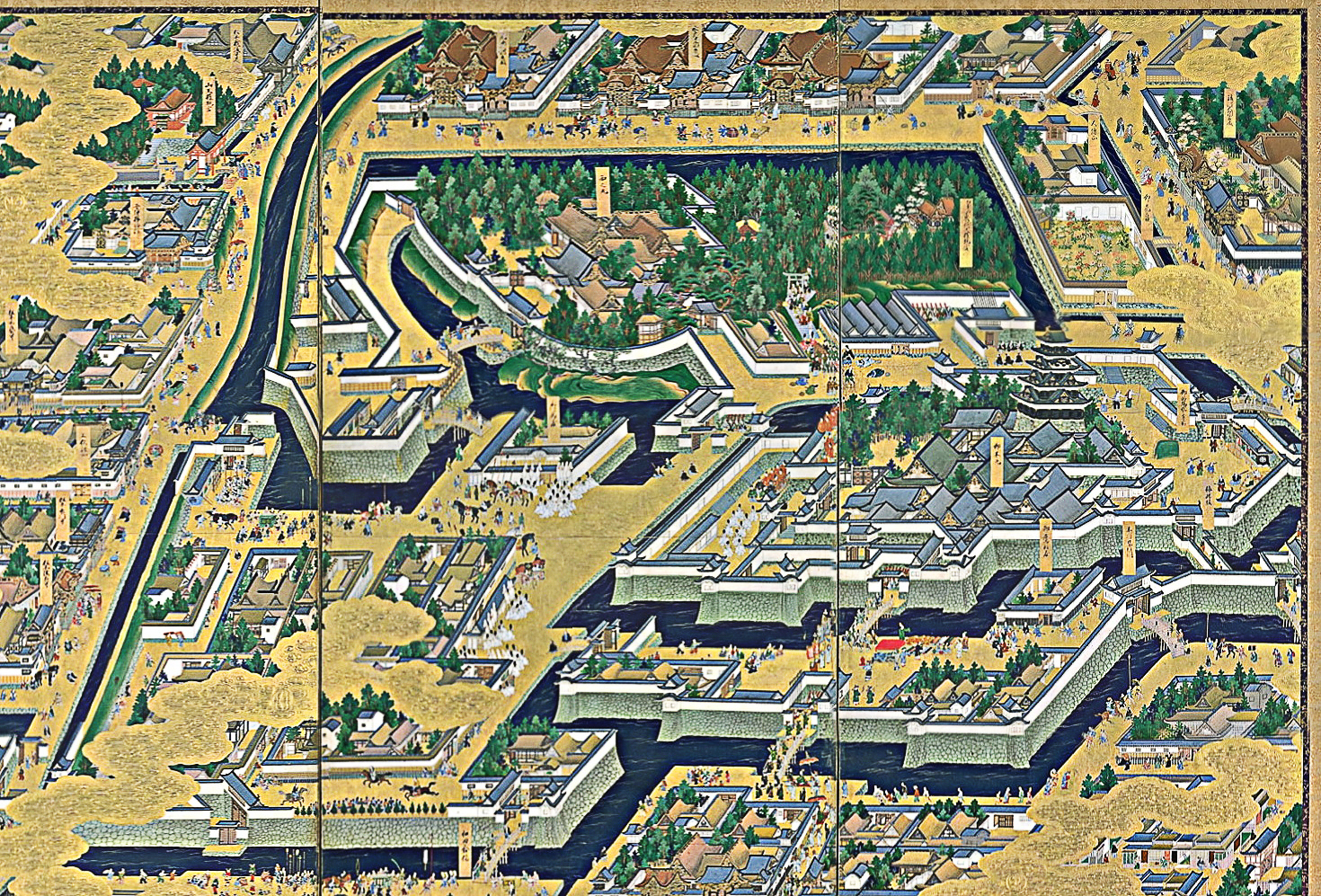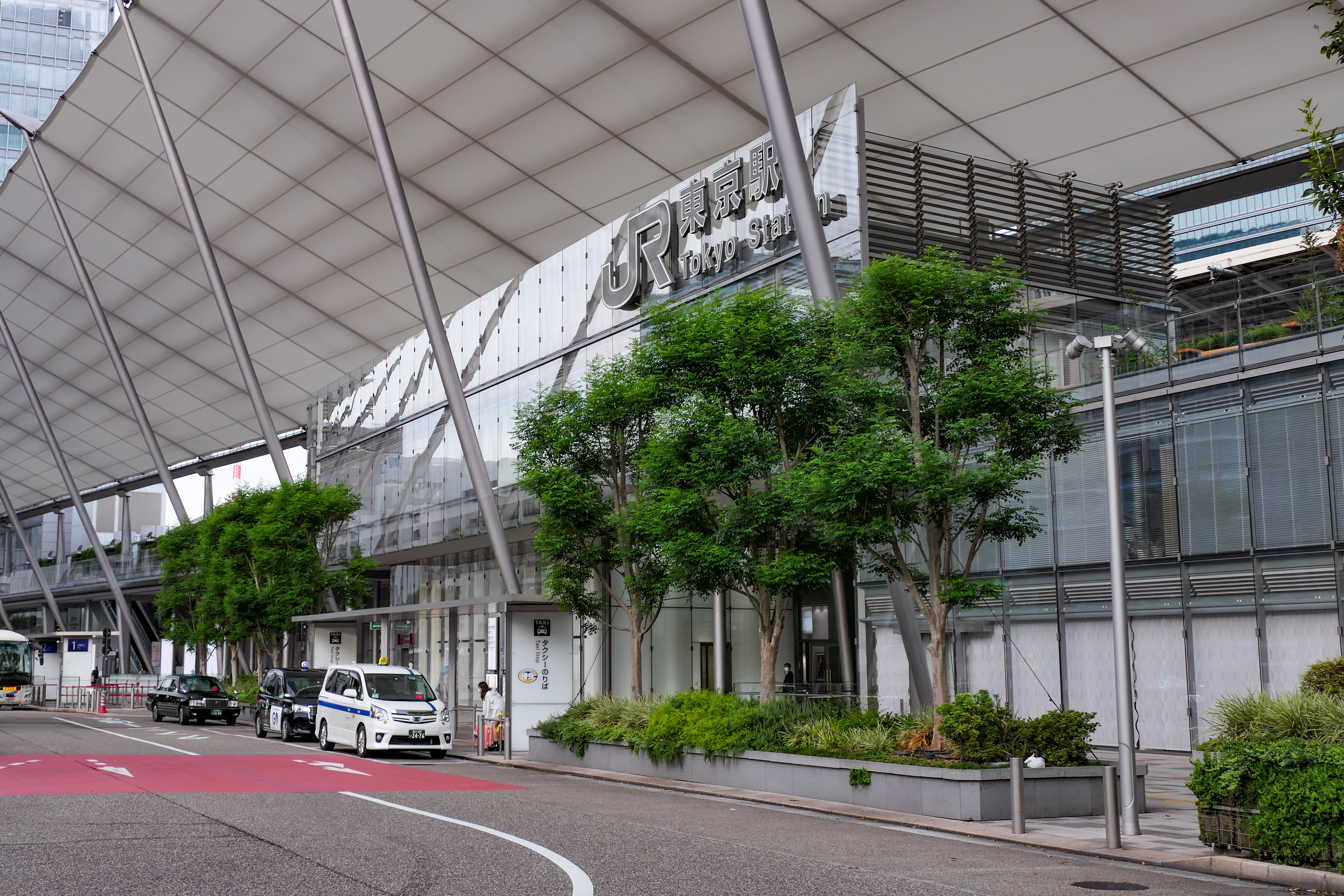|
Tokyo
Tokyo (; ja, 東京, , ), officially the Tokyo Metropolis ( ja, 東京都, label=none, ), is the capital city of Japan and one of the most populous cities in the world, with a population of over 14 million residents as of 2023. The Greater Tokyo Area, which includes Tokyo and parts of six neighbouring prefectures, is the most-populous metropolitan area in the world, with 40.8 million residents . Located at the head of Tokyo Bay, Tokyo is part of the Kantō region on the central coast of Honshu, Japan's largest island. Tokyo serves as Japan's economic center and the seat of both the Japanese government and the Emperor of Japan. The Tokyo Metropolitan Government administers Tokyo's central 23 special wards (which formerly made up Tokyo City), various commuter towns and suburbs in its western area, and two outlying island chains known as the Tokyo Islands. Despite most of the world recognising Tokyo as a city, since 1943 its governing structure has been more akin to a prefectu ... [...More Info...] [...Related Items...] OR: [Wikipedia] [Google] [Baidu] |
Tokyo Skytree
is a broadcasting and observation tower in Sumida, Tokyo. It became the tallest structure in Japan in 2010Tokyo Sky Tree beats Tokyo Tower, now tallest building in Japan The Mainichi Daily News, 29 March 2010 and reached its full height of in March 2011, making it the tallest tower in the world, displacing the Canton Tower, and the third tallest structure in the world after the [...More Info...] [...Related Items...] OR: [Wikipedia] [Google] [Baidu] |
Tokyo Metropolitan Government
The is the government of the Tokyo Metropolis. One of the 56 prefectures of Japan, the government consists of a popularly elected governor and assembly. The headquarters building is located in the ward of Shinjuku. The metropolitan government administers the special wards, cities, towns and villages that constitute part of the Tokyo Metropolis. With a population closing in on 14 million living within its boundaries, and many more commuting from neighbouring prefectures, the metropolitan government wields significant political power within Japan. Structure of Tokyo Metropolis Under Japanese law, Tokyo is designated as a ''to'' ( 都), translated as ''metropolis''. Within Tokyo Metropolis lie dozens of smaller entities, including twenty-three special wards (特別 区 -ku) which until 1943 made up Tokyo City but which now have individual local governments, each with a leader and a council. In addition to these 23 local governments, Tokyo also encompasses 26 cities (市 -sh ... [...More Info...] [...Related Items...] OR: [Wikipedia] [Google] [Baidu] |
Tokyo City
was a municipality in Japan and part of Tokyo-fu which existed from 1 May 1889 until its merger with its prefecture on 1 July 1943. The historical boundaries of Tokyo City are now occupied by the Special Wards of Tokyo. The new merged government became what is now Tokyo, also known as the '' Tokyo Metropolis'', or, ambiguously, ''Tokyo Prefecture''. History In 1868, the medieval city of Edo, seat of the Tokugawa government, was renamed Tokyo, and the offices of Tokyo Prefecture (''-fu'') were opened. The extent of Tokyo Prefecture was initially limited to the former Edo city, but rapidly augmented to be comparable with the present Tokyo Metropolis. In 1878, the Meiji government's reorganization of local governments subdivided prefectures into counties or districts (''gun'', further subdivided into towns and villages, later reorganized similar to Prussian districts) and districts or wards (''ku'') which were in ordinary prefectures cities as a whole, e.g. today's Hir ... [...More Info...] [...Related Items...] OR: [Wikipedia] [Google] [Baidu] |
Tokyo Station
Tokyo Station ( ja, 東京駅, ) is a railway station in Chiyoda, Tokyo, Japan. The original station is located in Chiyoda's Marunouchi business district near the Imperial Palace grounds. The newer Eastern extension is not far from the Ginza commercial district. Due to the large area covered by the station, it is divided into the Marunouchi (west) and Yaesu (east) sides in its directional signage. Served by the high-speed rail lines of the Shinkansen network, Tokyo Station is the main inter-city rail terminal in Tokyo. It is the busiest station in Japan, with more than 4,000 trains arriving and departing daily, and the fifth-busiest in Eastern Japan in terms of passenger throughput; on average, more than 500,000 people use Tokyo Station every day. The station is also served by many regional commuter lines of Japan Railways, as well as the Tokyo Metro network. Lines Trains on the following lines are available at Tokyo Station: * ** Tōhoku Shinkansen ** Yamagata Shinkansen ... [...More Info...] [...Related Items...] OR: [Wikipedia] [Google] [Baidu] |
Tokyo Imperial Palace
The is the main residence of the Emperor of Japan. It is a large park-like area located in the Chiyoda district of the Chiyoda ward of Tokyo and contains several buildings including the where the Emperor has his living quarters, the where various ceremonies and receptions take place, some residences of the Imperial Family, an archive, museums and administrative offices. It is built on the site of the old Edo Castle. The total area including the gardens is . During the height of the 1980s Japanese property bubble, the palace grounds were valued by some to be more than the value of all of the real estate in the U.S. state of California. History Edo castle After the capitulation of the shogunate and the Meiji Restoration, the inhabitants, including the Shōgun Tokugawa Yoshinobu, were required to vacate the premises of the Edo Castle. Leaving the Kyoto Imperial Palace on 26 November 1868, the Emperor arrived at the Edo Castle, made it to his new residence and ren ... [...More Info...] [...Related Items...] OR: [Wikipedia] [Google] [Baidu] |
Municipalities Of Japan
Japan has three levels of governments: national, prefectural, and municipal. The nation is divided into 47 prefectures. Each prefecture consists of numerous municipalities, with 1,719 in total (January 2013 figures There are four types of municipalities in Japan: Cities of Japan, cities, towns, villages and special wards (the ''ku'' of Tokyo). In Japanese, this system is known as , where each kanji in the word represents one of the four types of municipalities. Some designated cities also have further administrative subdivisions, also known as wards. But, unlike the Special wards of Tokyo, these wards are not municipalities. Status The status of a municipality, if it is a village, town or city, is decided by the prefectural government. Generally, a village or town can be promoted to a city when its population increases above fifty thousand, and a city can (but need not) be demoted to a town or village when its population decreases below fifty thousand. The least-popula ... [...More Info...] [...Related Items...] OR: [Wikipedia] [Google] [Baidu] |
Special Wards Of Tokyo
are a special form of municipalities in Japan under the 1947 Local Autonomy Law. They are city-level wards: primary subdivisions of a prefecture with municipal autonomy largely comparable to other forms of municipalities. Although the autonomy law today allows for special wards to be established in other prefectures, to date, they only exist in the Tokyo Metropolis which consists of 23 special wards and 39 other, ordinary municipalities (cities, towns, and villages). The occupy the land that was Tokyo City in its 1936 borders before it was abolished under the Tōjō Cabinet in 1943 to become directly ruled by the prefectural government, then renamed to "Metropolitan". During the Occupation of Japan, municipal autonomy was restored to former Tokyo City by the establishment of special wards, each with directly elected mayor and assembly, as in any other city, town or village in Tokyo and the rest of the country. Minority, mostly leftist calls for a were not answered. ... [...More Info...] [...Related Items...] OR: [Wikipedia] [Google] [Baidu] |
List Of Cities In Tokyo Metropolis By Population
The following list sorts all cities (including towns and villages) in the Japanese metropolis of Tokyo Tokyo (; ja, 東京, , ), officially the Tokyo Metropolis ( ja, 東京都, label=none, ), is the capital and largest city of Japan. Formerly known as Edo, its metropolitan area () is the most populous in the world, with an estimated 37.468 ... with a population of more than 5,000 according to the 2020 Census. As of October 1, 2020, 31 places fulfill this criterion and are listed here. This list refers only to the population of individual cities, towns and villages within their defined limits, which does not include other municipalities or suburban areas within urban agglomerations. List The following table lists the 31 cities, towns and villages in Tokyo with a population of at least 5,000 on October 1, 2020, according to the 2020 Census. The table also gives an overview of the evolution of the population since the 1995 census. References {{reflist * Tok ... [...More Info...] [...Related Items...] OR: [Wikipedia] [Google] [Baidu] |
Prefectures Of Japan
Japan is divided into 47 prefectures (, ''todōfuken'', ), which rank immediately below the national government and form the country's first level of jurisdiction and administrative division. They include 43 prefectures proper (, '' ken''), two urban prefectures (, '' fu'': Osaka and Kyoto), one "circuit" or "territory" (, ''dō'': Hokkai-dō) and one metropolis (, '' to'': Tokyo). In 1868, the Meiji ''Fuhanken sanchisei'' administration created the first prefectures (urban ''fu'' and rural ''ken'') to replace the urban and rural administrators ('' bugyō'', '' daikan'', etc.) in the parts of the country previously controlled directly by the shogunate and a few territories of rebels/shogunate loyalists who had not submitted to the new government such as Aizu/ Wakamatsu. In 1871, all remaining feudal domains ''( han)'' were also transformed into prefectures, so that prefectures subdivided the whole country. In several waves of territorial consolidation, today's 47 prefectur ... [...More Info...] [...Related Items...] OR: [Wikipedia] [Google] [Baidu] |
Subprefectures Of Japan
are a Japanese form of self-government which focuses on local issues below the prefectural level. It acts as part of the greater administration of the state and as part of a self-government system.Imperial Japanese Commission to the Louisiana Purchase Exposition. (1903)''Japan in the beginning of the 20th century'', p. 80 History They were given a definite form in 1878 (''Meiji 11'').Imperial Japanese Commissionp. 81 The Meiji government established the as an administrative unit. In 1888 (''Meiji 21''), the sub-prefecture as a form of self-government was officially recognized as more general than civic corporations like cities, towns and villages. Certain prefectures of Japan are now, or once were, divided into subprefectures. The subprefecture is the jurisdiction surrounding a "branch office" of the prefectural government. Normally, the area of a subprefecture consists of a few to a dozen cities, towns, and/or villages. Subprefectures are formed to provide services of ... [...More Info...] [...Related Items...] OR: [Wikipedia] [Google] [Baidu] |
Shinjuku
is a special ward in Tokyo, Japan. It is a major commercial and administrative centre, housing the northern half of the busiest railway station in the world ( Shinjuku Station) and the Tokyo Metropolitan Government Building, the administration centre for the government of Tokyo. As of 2018, the ward has an estimated population of 346,235, and a population density of 18,232 people per km2. The total area is 18.23 km2. Since the end of the Second World War, Shinjuku has been a major secondary center of Tokyo ( ''fukutoshin''), rivaling to the original city center in Marunouchi and Ginza. It literally means "New Inn Ward". Shinjuku is also commonly used to refer to the entire area surrounding Shinjuku Station. The southern half of this area and of the station in fact belong to Yoyogi and Sendagaya districts of the neighboring Shibuya ward. Geography Shinjuku is surrounded by Chiyoda to the east; Bunkyo and Toshima to the north; Nakano to the west, and Shibuya ... [...More Info...] [...Related Items...] OR: [Wikipedia] [Google] [Baidu] |





